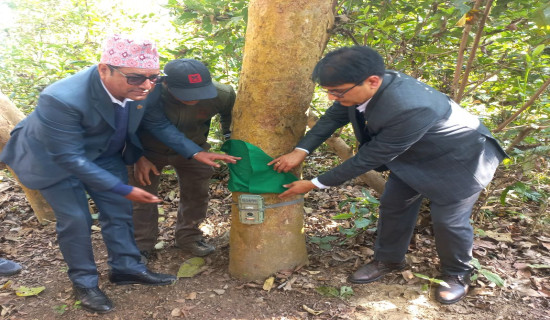- Tuesday, 16 December 2025
Need To Overcome Gender Inequality
Gender equality, parity, inclusion, and women empowerment are the most widely used terminologies in the global, regional, national, and local forefront as well. The concept of gender has evolved as the level of thought and schooling relating to rights and duties is gaining momentum. Gender-based discrimination, be it in the form of violence, inequalities, or discrimination, is one of the biggest problems worldwide that affects mostly women and girls regardless of their age, race, and social circumstances. It originates from a history of deeply entrenched gender inequality and is essentially violence that is directed against a person because of their gender. Gender equality often involves legal and policy changes to remove barriers and ensure equal treatment, whereas gender inclusion is about changing social norms, practices, and structures to make them more welcoming and supportive of diversity in gender identities.
The roots of gender discussions can be traced back to early feminist movements in the 19th and early 20th centuries, which challenged traditional gender roles and advocated for women's rights. In the mid-20th century, various civil rights movements, including those for women’s liberation and LGBTQ+ rights, brought gender issues into the public discourse. The societal structure in Nepal which is deeply rooted in the patriarchal values, norms, and mindset, has hindered Nepali women and girls to live free of gender-based discrimination and violence. The 1975 International Women’s Year and the subsequent United Nations Decade for Women (1976–1985) brought global attention to gender issues, influencing women’s activism in Nepal. The new constitution enshrined gender equality as a fundamental right and introduced measures to promote women’s participation in politics and public life, including the requirement that at least one-third of the members of parliament be women.
Human rights instruments
Nepal has ratified as many as 23 international human rights instruments that include international conventions and covenants on women, ethnic minorities, and persons with disability (PWD), and against racial discrimination. Nepal is committed to the UN Sustainable Development Goals and to “leaving no one behind.” International movements and conventions, such as the Convention on the Elimination of All Forms of Discrimination against Women (CEDAW), which Nepal ratified in 1991, have influenced the country’s gender policies. Nepal's 15th National Plan (2019/20 - 2023/24) places a significant emphasis on gender equality and social inclusion, reflecting the government's commitment to addressing gender issues across various sectors. Nepal’s commitment to the United Nations’ SDGs, particularly Goal 5 (Gender Equality), has further pushed gender issues to the forefront of national development agendas.
Despite having several laws, policies, guidelines, and mechanisms, the cases relating to gender-based discrimination and violence in our society are increasing. The deeply rooted and traditional beliefs being ingrained in the mindset of the people should only be removed through applying and enforcing the enacted laws. Lack of awareness, illiteracy, patriarchal mindset, social taboos, and traditional beliefs are some of the underlying factors that caused gender-based discrimination. Nepal has taken multiple approaches through national and international normative frameworks to ensure equality and to address the issue of gender inequalities and inclusion.
The National Gender Policy 2077 provides guidelines for mainstreaming gender in various sectors of the economy with the overall goal of reducing gender inequalities and enhancing the participation of women, men, girls, and boys in socio-economic and political development. The National Gender Equality Policy strives to institutionalise a gender-responsive governance system in all three tiers of government through the gender-responsive budget and establishment of an equitable, prosperous, and just society.
Despite these advancements, gender issues remain a significant challenge in Nepal. Deep-rooted cultural norms, economic disparities, and gender-based violence continue to hinder progress toward full gender equality. The intersection of gender and democracy in Nepal highlights the complexities of integrating traditional patriarchal values with modern democratic principles, where efforts to promote gender equality often clash with deeply ingrained cultural norms. The importance of addressing both the structural and cultural barriers to gender equality in the Asia Pacific region, including Nepal, needs a more holistic approach that goes beyond legal reforms to include changes in societal attitudes and norms.
Kathmandu Declaration
The National Human Rights Commission of Nepal, in collaboration with the Asia Pacific Forum (APF), invited the members of National Human Rights Institutions (NHRIs) of APF to participate in a three- day international conference on gender inclusion in NHRIs, which started on September 3 in Kathmandu. The conference will adopt a Kathmandu Declaration on gender inclusion in NHRIs as a roadmap to implement gender mainstreaming strategies and actions within NHRIs`. Though organising such an international conference on different thematic areas relating to human rights has been envisioned in the 6th Strategic Plan (2021-26) of NHRCN, this conference will significantly be pragmatic as the theme “gender inclusion” covers a broad array of human rights. NHRIs in the Asia Pacific Region have to develop a robust mechanism that can strongly ensure the states’ responsibilities in applying a human rights-based approach in all sectors making inclusive representations as enshrined in the constitutions of respective countries.
Failure to abide by such recommendations made by NHRIs could result in holding them accountable which makes the government more serious in terms of implementing the laws, plans, policies, and commitments. Most of the NHRIs are mandated to recommend policy changes and enhancement that could further promote gender inclusion and provide suggestions on how to strengthen the enforcement of existing laws and improve gender inclusion on the ground emphasising the need for continued efforts in legal reform and enforcement to achieve true gender inclusion in Asia Pacific Region including Nepal. Moreover, AFP should bring the discourse for establishing a regional protection system. Unlike in other regions, the Asia-Pacific region lacks a formalised or established system at the regional level where people can seek protection or remedy when their human rights are violated. This makes the role of NHRIs in our region even more critical.
(The author is former regional director of Human Rights Commission Nepal.)

















